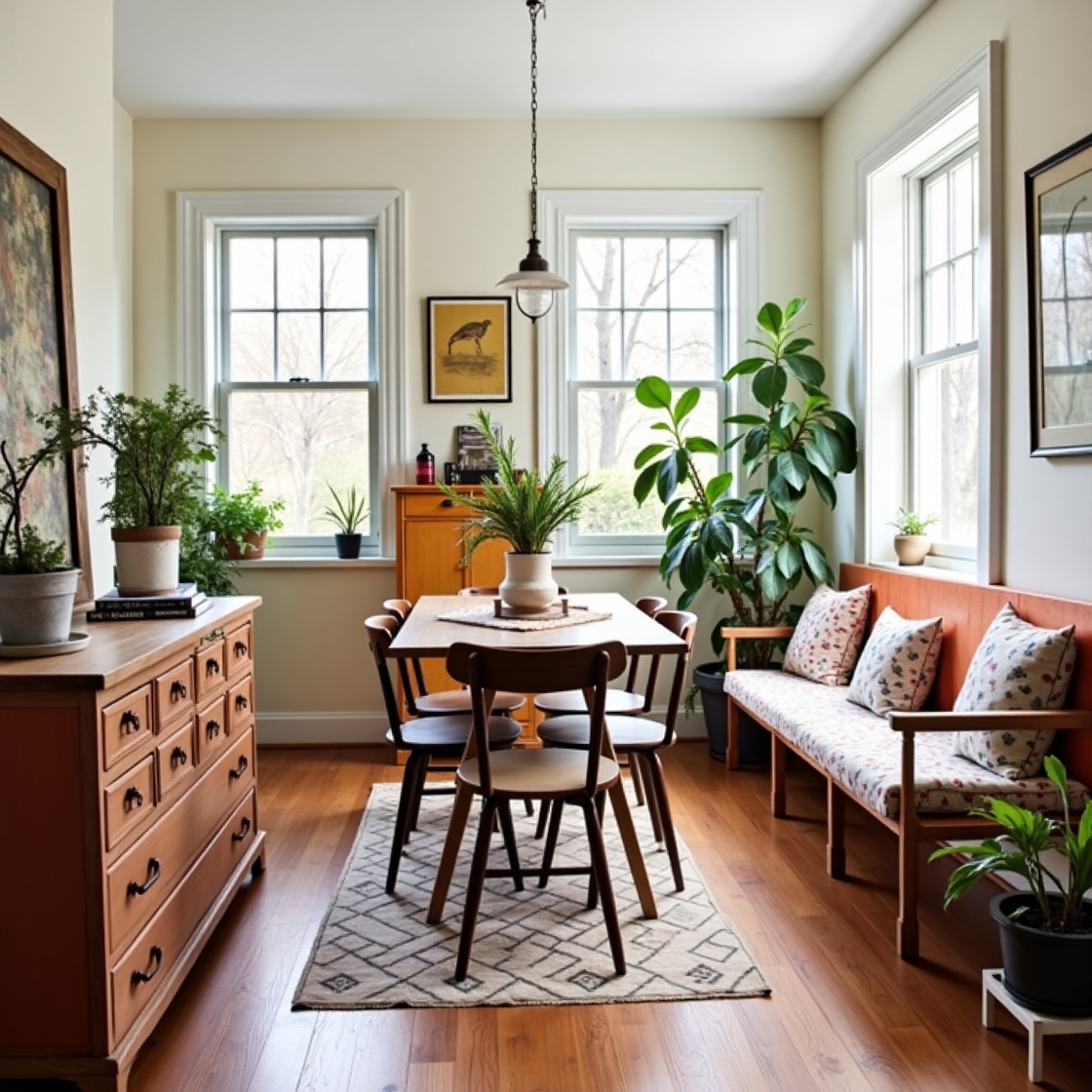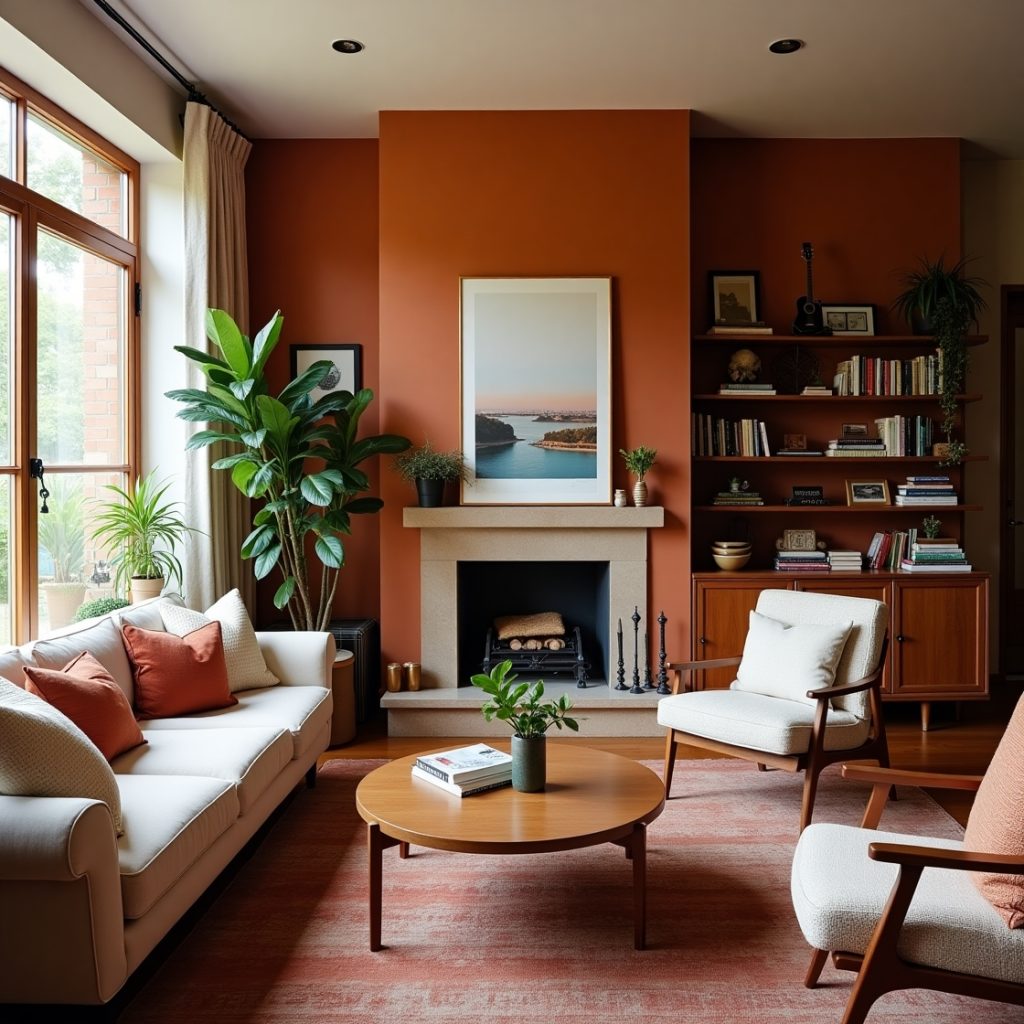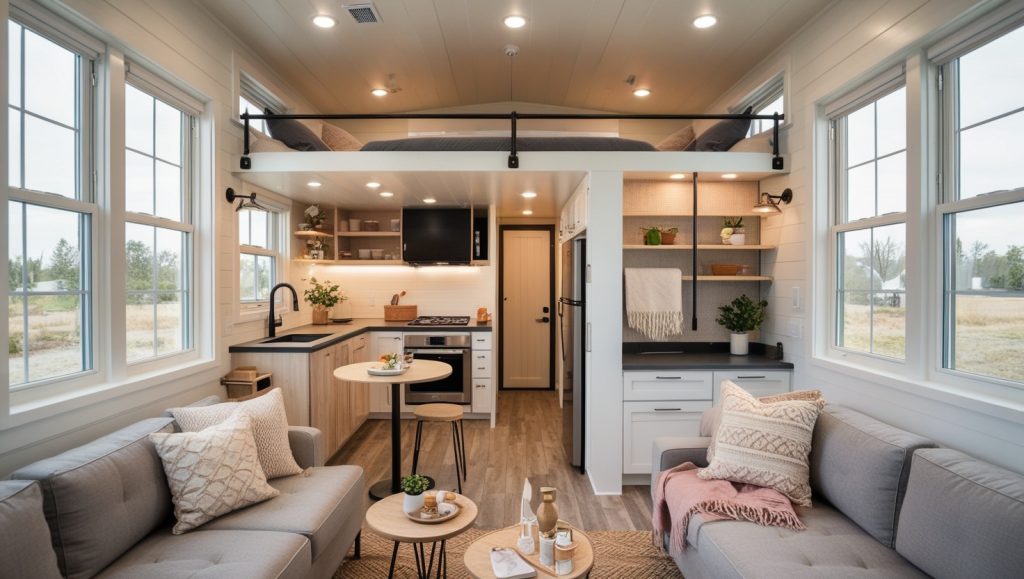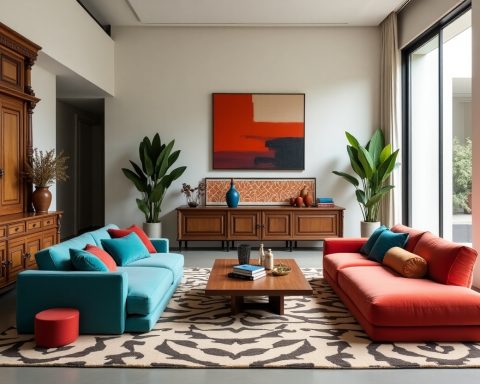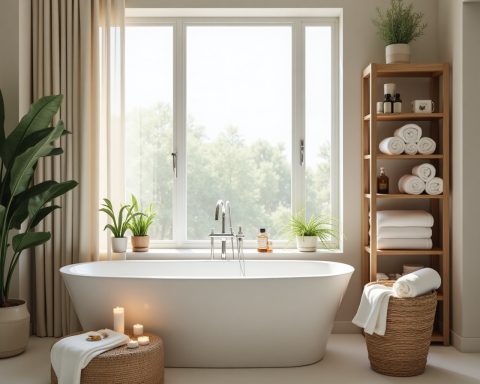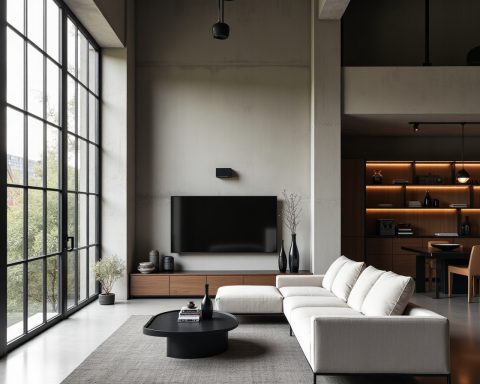In a world increasingly conscious of sustainability and individuality, the art of repurposing old furniture has blossomed into a powerful design trend. Transforming forgotten or outdated pieces into unique, eye-catching statement items not only reduces waste and saves money but also allows you to inject unparalleled personality and history into your home. This guide will illuminate the creative process of breathing new life into old furniture, equipping you with the inspiration and practical steps to turn discarded treasures into trendy focal points that reflect your personal style and commitment to conscious living.
Here’s how to repurpose old furniture into trendy statement pieces:
1. See the Potential: Beyond the Current Form:
- Train Your Eye: Develop the ability to look beyond the current finish, hardware, and even the original function of a piece. Envision its underlying structure, interesting lines, and the potential for transformation.
- Consider Different Uses: Could that old dresser become a stylish entryway console? Could a vintage trunk serve as a unique coffee table? Think outside the box and explore alternative uses.
- Focus on Good Bones: Prioritize pieces with solid construction and interesting shapes, even if the surface needs work. Quality craftsmanship is a great foundation for repurposing.
2. Identify Your Style and Needs:
- Align with Your Aesthetic: Consider your existing home décor and the trendy styles you admire (e.g., mid-century modern, industrial, bohemian, farmhouse). Choose repurposing projects that will complement your overall aesthetic.
- Address Functional Needs: Think about what kind of statement piece would be most useful in your home. Do you need extra storage, a unique seating option, or a distinctive surface?
3. Brainstorm Creative Transformation Ideas:
- Upcycling vs. Repurposing: Understand the difference. Upcycling enhances the existing form, while repurposing changes its function. Both can lead to trendy statement pieces.
- Inspiration Sources: Look to Pinterest, Instagram, design blogs, and even retail stores for inspiration on furniture transformations.
- Consider Current Trends: Think about popular design trends like bold colors, geometric patterns, natural materials, and mixed metals, and how you can incorporate them into your repurposed piece.
4. Essential Steps: Cleaning, Sanding, and Preparation:
- Thorough Cleaning: Begin by thoroughly cleaning the old furniture to remove dirt, dust, grease, and any loose debris.
- Proper Sanding: Sanding is crucial for creating a smooth surface for painting, staining, or applying other finishes. Choose the appropriate grit sandpaper for the job.
- Priming for Success: Apply a primer, especially when painting, to ensure better adhesion and a more even finish.
5. Unleash Your Creativity with Finishes:
- Bold Paint Colors: A fresh coat of vibrant or on-trend paint can instantly modernize an old piece. Consider bold jewel tones, matte blacks, or pastel hues.
- Staining for Natural Beauty: If the wood has character, consider stripping and staining it to enhance its natural grain and warmth. Experiment with different stain colors.
- Distressing for Vintage Charm: Techniques like sanding edges or applying crackle finishes can give a new piece a desirable vintage or farmhouse aesthetic.
- Metallic Accents: Incorporating metallic paint, leafing, or hardware can add a touch of glamour or industrial chic.
- Pattern Play: Use stencils, tape, or freehand painting to add geometric patterns, stripes, or other trendy designs.
6. Reimagine Functionality: Repurposing in Action:
- Dressers Reimagined: Turn an old dresser into a bathroom vanity, a stylish bar cart, an entryway console with storage, or even a unique kitchen island.
- Tables Transformed: An old sewing machine table can become a quirky side table, a vintage door can be repurposed as a rustic coffee table, or a tiered serving stand can be crafted from old plates and candlesticks.
- Seating with a Twist: An old armchair can be reupholstered in a trendy fabric, a wooden bench can be painted in a bold color, or old crates can be stacked to create modular seating.
- Storage Solutions: Old suitcases can become decorative storage boxes, vintage lockers can offer industrial-chic storage, and repurposed ladders can serve as unique shelving units.
7. Upgrade with Hardware and Details:
- Trendy Hardware: Swapping out old, dated knobs and pulls for modern or vintage-inspired hardware can dramatically change the look of a piece. Consider brass, matte black, or unique vintage finds.
- Adding Legs or Feet: Changing the legs or feet of a piece can significantly alter its style and height. Consider hairpin legs for a mid-century feel or industrial casters for mobility.
- Decorative Elements: Add details like decorative molding, stencils, decoupage, or fabric panels to enhance the statement-making quality of your repurposed piece.
8. Incorporate Current Design Trends:
- Mid-Century Modern Influence: Look for pieces with clean lines that can be refinished with tapered legs and walnut tones.
- Industrial Chic: Embrace raw materials like metal and wood. Consider adding metal pipes as legs or leaving some hardware exposed.
- Bohemian Vibes: Use vibrant colors, intricate patterns, natural materials like rattan and macrame, and eclectic hardware.
- Farmhouse Style: Opt for distressed finishes, neutral colors, and rustic hardware. Consider adding shiplap or barn door details.
- Biophilic Design: Incorporate natural elements like wood, plants, and earthy tones into your repurposed pieces.
9. Tell a Story with Your Repurposed Piece:
- Highlight its History: Don’t be afraid to leave some imperfections or signs of age that hint at the piece’s past life. This adds character and a unique story.
- Personalize it: Incorporate elements that reflect your own interests and style, making the piece truly one-of-a-kind.
10. Functionality Meets Aesthetics:
- Ensure Practicality: While creating a statement piece, don’t forget about its functionality. Ensure it serves its intended purpose effectively.
- Balance Boldness with Usability: A trendy piece should be visually striking but also practical for everyday use.
11. Don’t Be Afraid to Experiment and Fail:
- The Learning Process: Repurposing often involves some trial and error. Don’t be discouraged if your first attempt isn’t perfect.
- Embrace the DIY Spirit: Enjoy the creative process and the satisfaction of transforming something old into something new and stylish.
12. Source Your Materials Wisely:
- Thrift Stores and Flea Markets: These are goldmines for unique and affordable old furniture.
- Online Marketplaces: Explore local listings for unwanted furniture.
- Roadside Finds (with Permission): Keep an eye out for discarded pieces with potential.
13. Safety First:
- Wear Protective Gear: When sanding, painting, or using power tools, always wear appropriate safety gear like masks, gloves, and eye protection.
- Ensure Stability: Make sure your repurposed piece is structurally sound and safe for its intended use.
14. Document Your Transformation:
- Before and After Photos: Take photos of the furniture before and after your transformation to appreciate the journey and inspire others.
By embracing creativity, mastering basic refinishing techniques, and envisioning new possibilities, you can transform forgotten furniture into trendy statement pieces that elevate your home’s style, reflect your personality, and contribute to a more sustainable way of living. The beauty of repurposing lies in its ability to blend the old with the new, creating unique treasures that tell a story and add character to your space. Sources and related content
15. Incorporate Unexpected Materials:
- Mix and Match: Don’t limit yourself to traditional furniture materials. Consider incorporating unexpected elements like reclaimed wood, metal scraps, vintage maps, or even repurposed textiles into your furniture transformations.
- Add Unique Hardware: Look for unusual knobs, handles, or hinges at antique stores or architectural salvage yards to give your piece a distinctive touch.
16. Play with Scale and Proportion:
- Oversized Statements: Sometimes, taking a small, unassuming piece and scaling it up can create a dramatic statement. Think of turning an old step ladder into a tall, quirky bookshelf.
- Miniature Transformations: Conversely, reimagining a large piece in a smaller format can also be impactful, like turning a section of an old headboard into a decorative wall hanging.
17. Embrace the “Perfectly Imperfect” Aesthetic:
- Wabi-Sabi Influence: Lean into the Japanese philosophy of Wabi-Sabi, which celebrates the beauty of imperfection and transience. Don’t strive for flawless perfection in your repurposed pieces; embrace the unique character that comes with age and a handmade touch.
- Highlighting History: Allow some of the original wear and tear to show through your new finish, hinting at the piece’s past life and adding to its story.
18. Collaborate and Share Ideas:
- DIY Communities: Connect with online or local DIY communities to exchange ideas, get advice, and find inspiration for your repurposing projects.
- Workshops and Classes: Consider taking workshops or classes on furniture refinishing, upholstery, or other relevant skills to expand your repurposing capabilities.
19. Stage Your Statement Piece:
- Strategic Placement: Once your repurposed piece is complete, carefully consider where to place it in your home to maximize its impact as a statement item.
- Complementary Decor: Surround your repurposed furniture with other decorative elements that enhance its style and narrative.
20. Enjoy the Unique Character and Sustainability:
- One-of-a-Kind Design: The beauty of repurposing lies in creating truly unique pieces that you won’t find anywhere else. Embrace the individuality of your creations.
- Conscious Consumption: Take pride in contributing to a more sustainable lifestyle by giving new life to old items and reducing waste.
By embracing these additional ideas and continuing to explore the possibilities of repurposing, you can transform your home into a gallery of unique, trendy statement pieces that not only reflect your personal style but also contribute to a more creative and sustainable way of living. The journey of breathing new life into old furniture is a rewarding one, filled with the satisfaction of creation and the joy of owning truly one-of-a-kind treasures.
